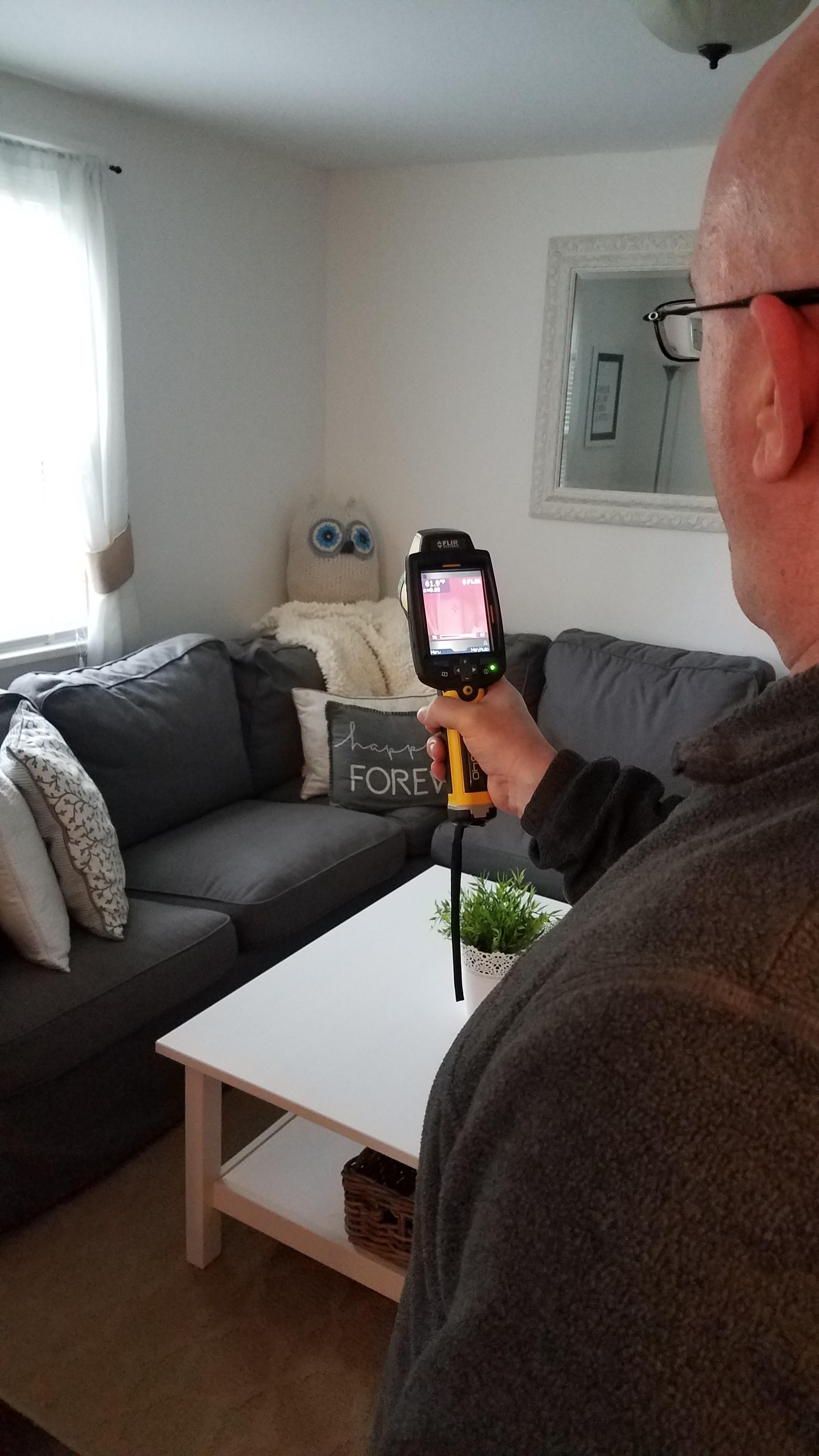
On a rainy day in early June, Building Performance Institute (BPI) staff gathered at my home, affectionately known as “Q Casa,” to see what goes into an energy audit. Several of us in Client Relations and Marketing regularly write about energy audits and talk daily with energy auditors, but had yet to witness an energy audit firsthand. This was an enlightening experience for me, both as the homeowner and as a marketing professional.
How does an energy audit start?
Jeremy O’Brien and Darlene Welch (BPI Technical Relations Representatives) were our in-house energy auditing professionals. They kicked off the day by passing out a few different types of data collection sheets. Most energy auditors take ultra-detailed notes, ranging from the make, date, and model of your heating system to the dimensions of all your walls, windows, and doorways.
Bonus (if available): Because much of the data overlaps with the Home Energy Score data collection process, some energy auditors (who are also qualified Home Energy Score Assessors) will do both an energy audit and a Home Energy Score assessment at the same time. This could save you, the homeowner, a second trip and potentially save you money on the cost of that report. You can find a contractor that also does Home Energy Score assessments through BPI on our locator tool.
What tools did we use?
The largest portion of an energy audit includes using diagnostic tools to visualize issues in the home. First, we closed all the windows and doors, putting it in "winter mode" (how it would run in winter: as sealed up as possible, except with all interior doors to rooms open). We then took turns setting up a blower door in one of my exterior doorways.
While some were learning this technique, others were using an infrared camera to check for any obvious heat differences in the insulation, around electrical outlets, and in other places. An infrared camera allows you to better visualize air movement and any temperature differences.
Once the blower door was up and running, these differences became more pronounced. The point of a blower door test is to get the house pressurized to 50 Pascals. This means that the difference in pressure inside the house versus outside the house is 50 Pascals. Once this is done, we were able to read the cubic feet per minute (unit of measurement for air flow) at 50 Pascals (cfm50). My house was reading 1,670 cfm50, or just over a cubic foot of total air leakage.
To put it in perspective, tight houses generally register below 1,200 cfm50, moderately leaky homes measure between 1,500 and 2,500 cfm50, and very leaky homes measure over 3,000 cfm50.
Yay, my home is only moderately leaky!
What else did I find out from my energy audit?
As I mentioned before, the infrared thermography camera was bound to pick up a more dramatic reading while the blower door was fired up, and that’s exactly what happened. In addition to seeing air entering through light fixtures upstairs, I could actually feel an influx of air around most of my electrical outlets throughout the house. That was weird.
Also, because my home was built in the 1930s and I didn’t know whether anyone had gone into the walls since, I expected some insulation issues. Not surprisingly, when we looked at the insulation in the walls while the blower door was going, the top foot of both the upstairs and downstairs walls were missing insulation; the loose fill insulation had settled with gravity.
What were my energy auditors’ recommendations?
I thought the day went great and that my little house passed the energy audit test (although it’s not really a test – my house could just be inefficient)! There weren’t any glaring health and safety concerns, but Jeremy and Darlene did recommend a few changes that could make my home more comfortable and lower my energy bills:
- Put a jacket on my hot water heater to keep it warm so it doesn’t have to work in overdrive during the colder months
- Insulate all of the hot water lines
- Be sure to keep the hot water heater temperature at 120 F as it’s the most efficient setting
- Insulate rim joists and walls in the basement
- Insulate basement crawl spaces and block off the small crawl space entrance from the rest of the basement, to prevent wasted heat from oil furnace
- Air seal all outlets and light fixtures in the occupied part of the house
- Blow in insulation in the top of the walls where the insulation has settled and is no longer present
Final note: Did you know that spiders generally build webs and hang out where there’s airflow in a home, as it could signal an entrance for other bugs (AKA dinner)?! Mind blown. You’ll never look at a web or its eight-legged inhabitant the same again.

Follow us